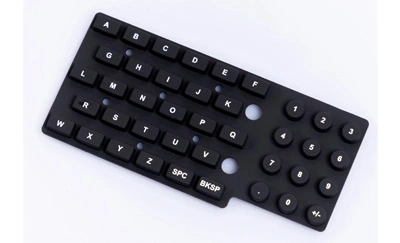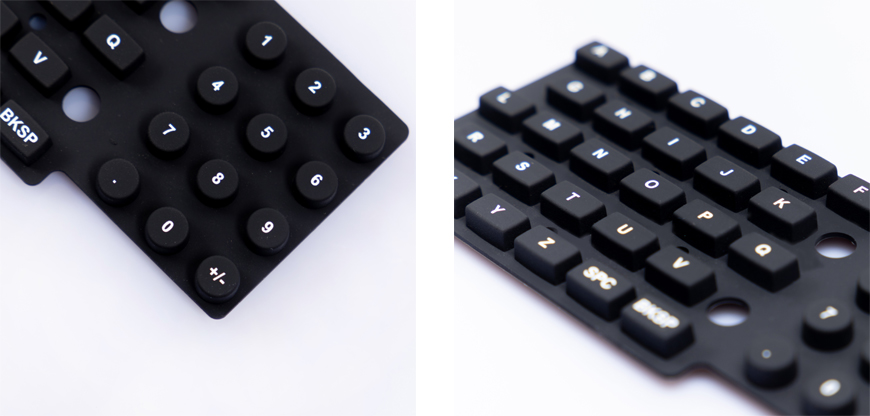
In today's rapidly evolving technological landscape, the demand for efficient and user-friendly interfaces has never been higher. One crucial component that often goes unnoticed but plays a pivotal role in many electronic devices is the LED membrane switch. These switches have become an integral part of numerous industries, including medical equipment, automotive, industrial controls, and consumer electronics. This article explores the world of LED membrane switches suppliers, shedding light on their significance, types, and factors to consider when choosing the right supplier.

Table of Contents
Introduction
Understanding LED Membrane Switches
What Is an LED Membrane Switch?
How Do LED Membrane Switches Work?
Applications and Industries
Medical Devices
Automotive Controls
Industrial Equipment
Consumer Electronics
Key Features of High-Quality LED Membrane Switches
Durability
Customization
Tactile Feedback
Choosing the Right LED Membrane Switch Supplier
Experience and Expertise
Quality Assurance
Cost-Effectiveness
Customer Support
Benefits of Partnering with Reputable Suppliers
Product Reliability
Design Flexibility
Timely Delivery
Case Studies
Success Stories of LED Membrane Switch Implementations
Future Trends in LED Membrane Switch Technology
Miniaturization
Enhanced Durability
Integration with IoT
Maintenance and Troubleshooting
Tips for Ensuring Longevity
Common Issues and Solutions
Environmental Considerations
Sustainability Practices
Frequently Asked Questions (FAQs)
Conclusion
LED membrane switches are at the forefront of modern interface technology, offering a seamless and visually appealing way to interact with electronic devices. They combine the flexibility of membrane switches with the illuminating power of LEDs, resulting in an interface that is both functional and aesthetically pleasing.
An LED membrane switch is a user interface that consists of multiple layers of flexible materials. These layers include graphic overlays, adhesive spacers, and a membrane circuit. The key feature that sets LED membrane switches apart is the integration of light-emitting diodes (LEDs) into the switch assembly.
LED membrane switches work by using pressure-sensitive conductive layers. When a user applies pressure to a specific area on the switch's surface, it closes the circuit and activates the LED, illuminating the corresponding button or indicator. This mechanism provides tactile feedback and visual cues to the user.
LED membrane switches find applications in various industries, each benefiting from their unique features.
Medical Devices
In the medical field, LED membrane switches are crucial for equipment like patient monitors and diagnostic devices. Their reliability and customization options make them ideal for healthcare professionals.
Automotive Controls
Automotive manufacturers use LED membrane switches in dashboard controls, ensuring drivers have easy access to vital functions. The durability of these switches is especially valuable in the automotive industry.
Industrial Equipment
Industrial machines and control panels often incorporate LED membrane switches for their durability and resistance to harsh environments. They are vital in ensuring smooth operations in manufacturing settings.
Consumer Electronics
From microwave ovens to remote controls, LED membrane switches are present in various consumer devices. Their sleek design and functionality enhance the user experience.
Durability
High-quality LED membrane switches are designed to withstand millions of presses, making them exceptionally durable even in demanding applications.
Customization
Suppliers offer customization options for graphic overlays, LED colors, and button layouts, allowing manufacturers to tailor switches to their specific needs.
Tactile Feedback
LED membrane switches provide tactile feedback, giving users confidence that their input has been registered.
Selecting the right supplier is crucial to ensure the success of your project.
Experience and Expertise
Look for suppliers with a track record of producing high-quality LED membrane switches and a deep understanding of your industry.
Quality Assurance
A reliable supplier should have strict quality control measures in place to ensure every switch meets industry standards.
Cost-Effectiveness
Balancing quality with affordability is essential. Choose a supplier that offers competitive pricing without compromising on quality.
Customer Support
Excellent customer support can make a significant difference in your experience as a client. Ensure your supplier is responsive and helpful.
Product Reliability
Reputable suppliers offer products that you can trust. Reliability is essential, especially in critical applications.
Design Flexibility
Customization options allow you to create switches that match your product's design and functionality requirements.
Timely Delivery
Working with a supplier known for on-time deliveries ensures your project stays on schedule.
Case Studies
Explore real-world examples of how LED membrane switches have made a difference in various industries.
As technology advances, LED membrane switches continue to evolve.
Miniaturization
Expect to see smaller and more compact LED membrane switches, suitable for space-constrained applications.
Enhanced Durability
Advancements in materials will lead to even more durable switches capable of withstanding extreme conditions.
Integration with IoT
LED membrane switches will increasingly integrate with the Internet of Things (IoT), offering enhanced connectivity and functionality.
Learn how to ensure the longevity of your LED membrane switches and address common issues.
Explore sustainability practices in the production of LED membrane switches.
Most LED membrane switches are not fully waterproof but can be designed with some level of water resistance.
Yes, some LED membrane switches are designed to withstand outdoor conditions and temperature variations.
The lifespan of LED membrane switches depends on usage but can range from several years to over a decade.
Yes, they are relatively easy to clean, typically requiring a mild detergent solution and a soft cloth.
Yes, many LED membrane switches can be customized to fit existing equipment.
In the realm of user interfaces, LED membrane switches shine bright. Their versatility, durability, and visual appeal make them indispensable in various industries. By choosing the right LED membrane switch supplier, you can illuminate your path to quality and innovation.